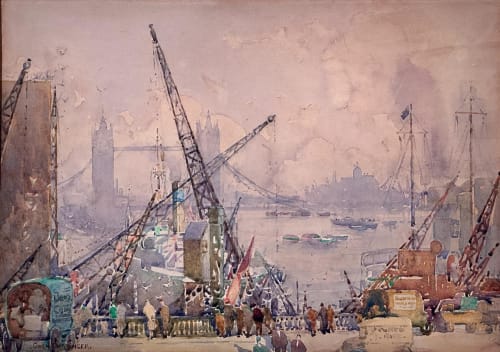Gwen Barringer, born in Adelaide on 29 July 1882 to Adam Adamson, was a notable painter. She received her artistic education at the SA School of Design under H.P. Gill and Archibald Collins, and later privately with Hans Heysen. In 1910, she married Herbert Barringer, also an artist and brother of Ethel Barringer. Initially focusing on landscapes, particularly "gum trees under various atmospheric conditions," inspired by her countryside excursions with her husband, Gwen's early works depicted the natural beauty they explored together.
The Barringers spent extensive time outdoors, initially camping in tents and later settling on 80 acres with Hans Heysen as their neighbor by 1916. Her husband authored a booklet titled The Mystery of the Bush in 1916, which Gwen illustrated. She was deeply involved with the [Royal] SA Society of Arts for more than three decades, achieving Fellow status in 1912. Before World War I, she held at least two solo exhibitions in Adelaide and was poised for a Melbourne exhibition halted by the war's outbreak, despite being a member of the Victorian Artists' Society.
Gwen Barringer's artistic output impressed contemporaries like Muriel Farr, who noted her significant development post-marriage, challenging prevailing beliefs about women balancing careers and marriage. Continuing to work primarily in watercolor, she shifted her focus from bush scenes to cityscapes after visiting Paris and London in 1926. Notably, during her visits to Sydney in the early 1930s, she captured the construction of the Harbour Bridge in her paintings. She also excelled in delicate still lifes, particularly flower studies.
Her influence extended beyond her artwork; she taught at the School of Arts and Crafts, formerly the School of Design where she herself had trained. Regarded as a thorough and skilled instructor, Gwen Barringer maintained a dedication to traditional subjects and techniques throughout her career, sometimes leading to disagreements with colleagues and students.
